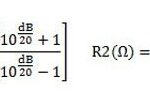The SSB, or Synchronization Signal Block, is a crucial component in the physical layer of 5G (Fifth Generation) wireless communication systems. It plays a key role in synchronizing and enabling efficient communication between User Equipment (UE) and the 5G network. Let’s delve into the detailed content and significance of the SSB in 5G:
- Purpose of SSB:
- The primary purpose of the SSB is to assist UEs in the synchronization and initial access procedures. It provides critical synchronization signals and information that enable UEs to align their communication with the network, ensuring reliable and efficient connectivity.
- Frequency and Time Synchronization:
- SSB carries synchronization signals that assist UEs in achieving both frequency and time synchronization with the 5G network.
- Frequency synchronization ensures that the UE’s radio frequency is aligned with the frequency of the serving cell, while time synchronization ensures that the UE’s timing is synchronized to the network’s timing reference.
- SSB in Frequency Domain:
- In the frequency domain, SSBs are allocated specific resource blocks within the frequency bandwidth of the 5G channel.
- Each SSB occupies a certain frequency resource, and multiple SSBs may be present in a given frequency band to support multiple UEs and facilitate efficient resource utilization.
- SSB in Time Domain:
- In the time domain, SSBs are transmitted periodically, and their presence is scheduled based on the network’s configuration.
- The periodic transmission of SSBs ensures that UEs can reliably detect and synchronize with the network at predefined intervals, allowing for efficient handovers and mobility support.
- SSB Structure:
- The SSB has a structured format that includes synchronization signals and reference signals. These signals provide essential information for UEs to identify and synchronize with the serving cell.
- The synchronization signals help UEs in acquiring initial time and frequency synchronization, while reference signals assist in channel estimation and decoding.
- MIB and SIB Information:
- The SSB carries critical system information, including the Master Information Block (MIB) and System Information Blocks (SIBs).
- The MIB contains fundamental information about the network, such as the physical cell identity, system bandwidth, and the frame structure. SIBs convey additional information, including cell-specific and broadcast information relevant to the UE.
- Beamforming and SSBs:
- 5G networks often employ beamforming techniques to improve coverage and capacity. In the context of SSBs, beamforming can be applied to direct the transmission of SSBs towards specific areas or UEs.
- Beamforming enhances the reliability of SSB detection and synchronization, especially in scenarios with challenging radio conditions or high interference.
- SSB and Beam Management:
- SSBs play a role in beam management procedures, including beam measurements and beam reporting by UEs.
- UEs can perform measurements on SSBs to determine the best serving cell and report this information to the network for optimized beamforming and handover decisions.
- Cell Search and Initial Access:
- During the initial access procedure, UEs perform cell search by detecting and synchronizing with SSBs. The information carried by SSBs assists UEs in identifying the serving cell and accessing the network.
- Efficient cell search and initial access are critical for establishing a connection with the 5G network promptly.
- Dynamic SSB Configurations:
- 5G networks support dynamic configurations of SSBs, allowing network operators to adapt SSB transmission parameters based on network load, coverage requirements, and mobility patterns.
- Dynamic SSB configurations contribute to the flexibility and optimization of the 5G network.
In summary, the SSB in 5G serves as a synchronization beacon, providing essential signals and information for UEs to align their frequency and time with the network. Its structured format, periodic transmission, and inclusion of critical system information make SSBs integral to the initial access procedure and ongoing communication between UEs and the 5G network.
